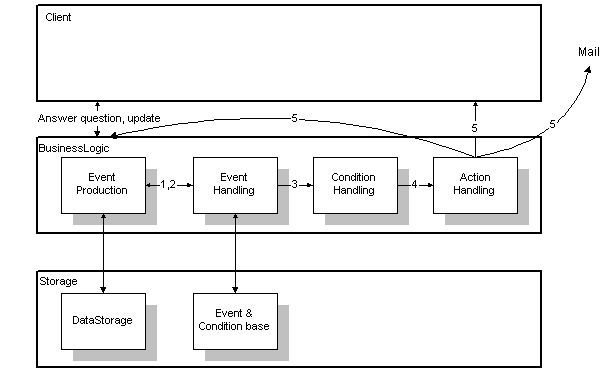
The event registry is used in IFS Applications for keeping track of the activities related to handling of events that occur inside the application. Events are programmatically defined, but the actions and conditions that apply can easily by configured.
The Event Registry is a way to create an active behavior on top of an Oracle Server and is based on the ECA-rule:
Picture edges too dark and thick and it looks quite old.

The event occurs, conditions are evaluated, if true then an action is executed.
The ECA-rule is a rule that almost all active databases follow. The rule can be described as the following:
An EVENT occurs in the database that generates a call to the condition handler. The condition handler evaluates certain CONDITIONS that are registered together with the action. If the evaluation is successful, the registered ACTION is performed.
An event can be described as something that happens in a transaction that generates a method call to the condition handler.
There are two types of events:
Conditions decide whether or not the registered action shall be performed.
Actions are the different types of responses that can be generated by the system when an event occurs. The actions can be conditioned so that they are fulfilled only when the conditions evaluate to true.
The idea of an active database is very useful in Foundation1. Implementation of this in applications should provide a flexible way to control events and the actions connected to them. The use of LUs makes it easy to find a location for the calls that have to be made in the database when a specified event happens. The use of an executor of actions makes it easy to support the actions that an event should result in.
The process to access Events can logically be divided into four different sections: Event Production, Event Handling, Condition Handling and Action Handling.

Principal design of event handling in the architecture context